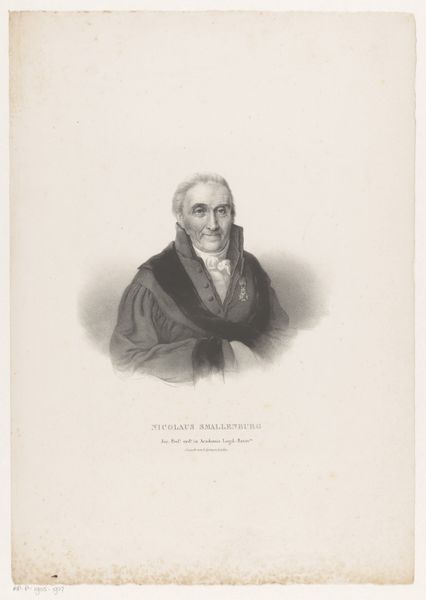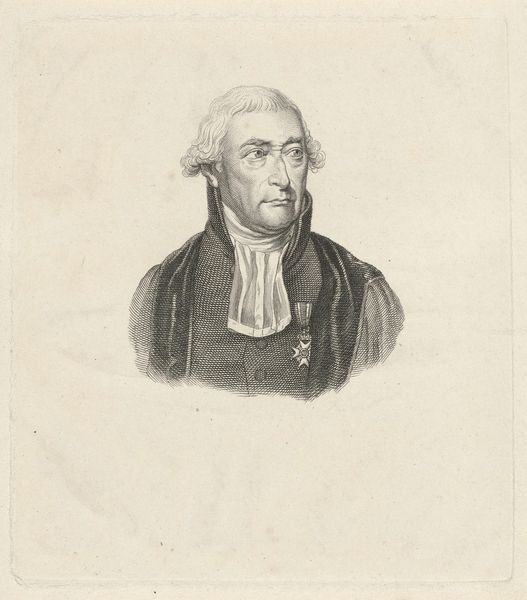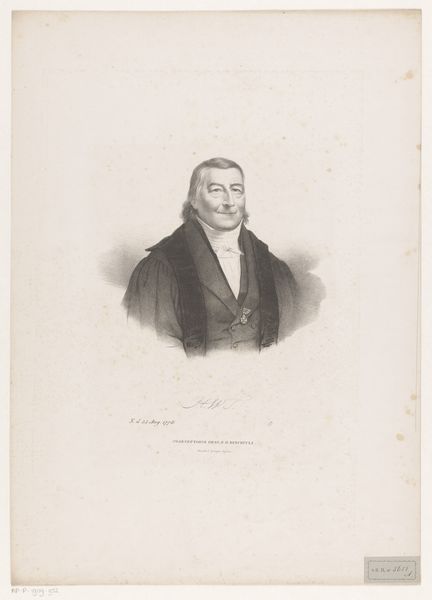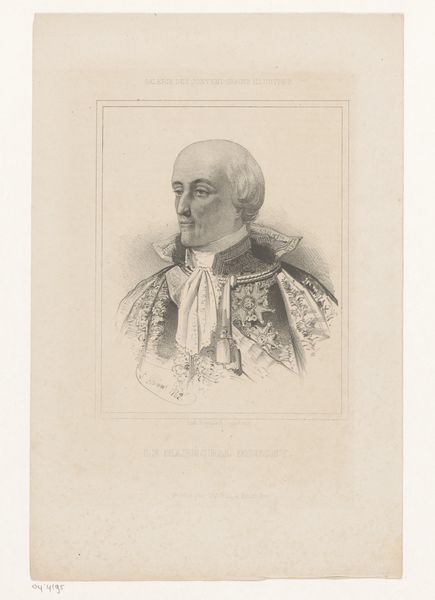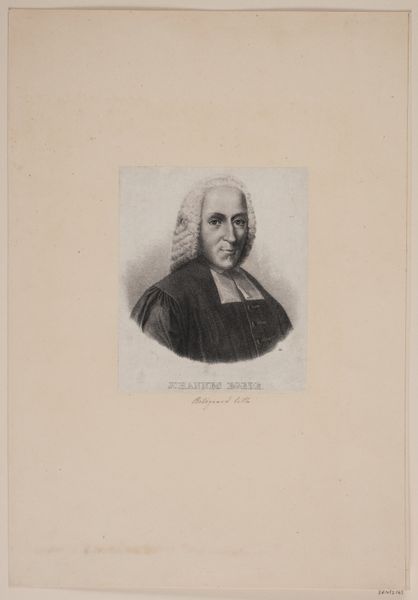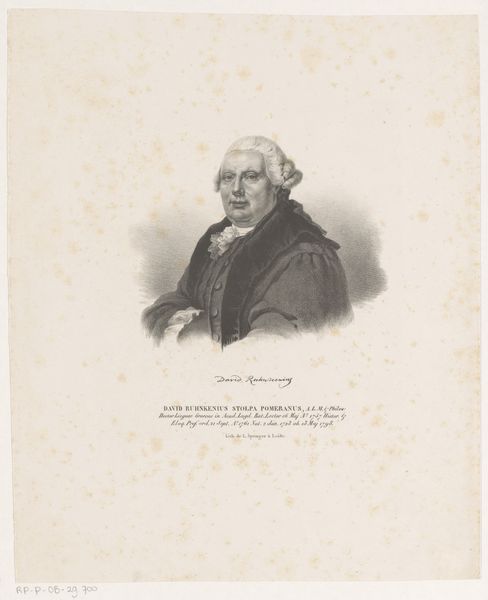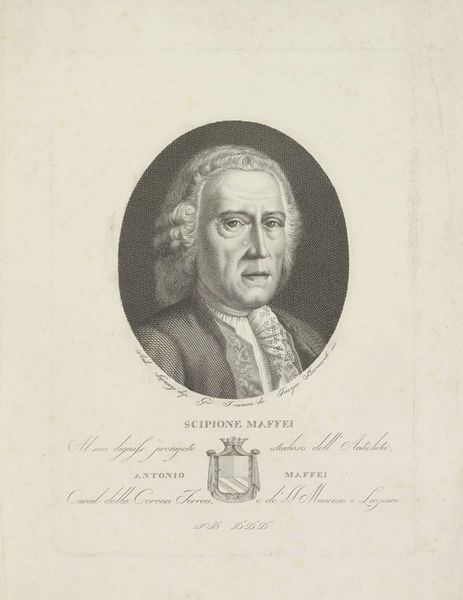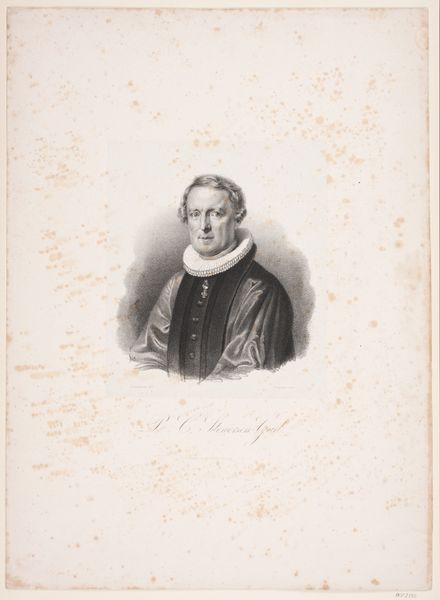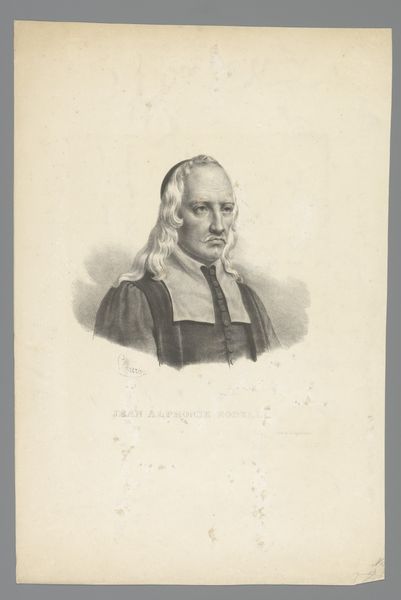
print, engraving
#
portrait
#
pencil drawn
#
neoclacissism
# print
#
pencil sketch
#
old engraving style
#
pencil drawing
#
portrait drawing
#
academic-art
#
engraving
Dimensions: height 511 mm, width 344 mm
Copyright: Rijks Museum: Open Domain
Curator: Here we have Jean-Baptiste Mauzaisse's print, "Portret van Rutger Jan Schimmelpenninck," made between 1826 and 1837. Editor: There’s a certain severity to it, a classical coolness. The composition, the pose, the precise rendering of the fabrics…it all feels very deliberate, and distancing. Curator: The symbols certainly reinforce that sense of authority. The medal, the carefully draped cloak…Schimmelpenninck is presented as a figure of considerable status and accomplishment. What do you see reflected of the period? Editor: Absolutely, there's an interesting tension at play within the formal elements themselves. Note the artist’s commitment to clean lines and symmetry, hallmark of the neoclassical movement that evokes rationalism, order and the enlightenment era of thinking, it gives the impression that we look at something official. Curator: Right, Neoclassicism was all about reviving the ideals of ancient Greece and Rome. Here, the print functions not just as a likeness, but also as an embodiment of those values: reason, order, civic duty. Editor: And yet, the medium itself – print and engraving in grayscale – subtly undermines any aspirations to grandiosity. The choice contributes to the reserved attitude and muted feeling overall. Curator: I would add that engravings are associated with permanence and authority. Printmaking allowed images of important figures to be disseminated widely, reinforcing their image in the public consciousness. It serves as an icon, if you like, of the man and the ideals he represented. Editor: Interesting idea, yet that contrast continues. Even though that objective may have been the intention, there is also the simple practicality of its form to consider, too. Its subtle imperfections in shade contribute to the human factor to balance any glorification, if that makes sense. Curator: Yes, and that balance is fascinating to contemplate: the intention of permanence, with the acknowledgment of impermanence. A ghost in the machine of its own symbolism. Editor: Precisely, making for something genuinely profound and quite timeless.
Comments
No comments
Be the first to comment and join the conversation on the ultimate creative platform.
